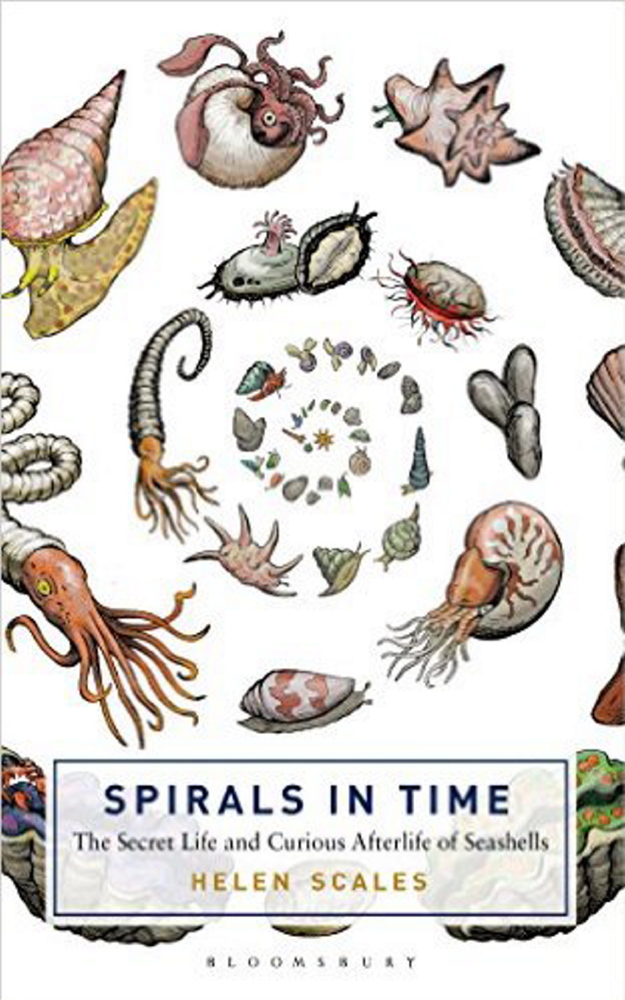When I was a preschooler, a relative gave me a beautiful triton shell. Knobby and pale-rose on the outside, kitten’s-mouth pink on the inside, the shell was a palm-size wonder to my 4-year-old self. I wanted badly to know: How did the sound of the ocean get inside it? How did it become such a beautiful color? What made it? I eventually learned that a living thing called a mollusk made my triton – a thing that looked like the contents of a handkerchief, sure, but was part of a distinguished, diverse family whose lineage on Earth stretches back more than 500 million years.
English marine biologist Helen Scales delivers accessible answers to those kinds of questions in her book, “Spirals in Time: The Secret Life and Curious Afterlife of Seashells.” It’s a history and catalog not just of what those little animals do, but what humans do with them.
For thousands of years, Scales notes, people have buried their notable dead with shells, worn shells on cords as jewelry, included their likenesses in artwork and used them as currency.
Archaeologists found a shell collection among Pompeii’s ash-coated ruins, and Scales introduces readers to the world’s most prolific shell collector – Hugh Cuming – who amassed 83,000 shells by the time he died in 1865. “What is astonishing, though, is how universally shells have come to hold great meaning. Far from being just pretty things to look at, shells have been embraced as powerful emblems of sex and power, of birth and of death,” Scales notes.
Scales dives deeply into the natural history of mollusks and the surprisingly complex things they do. Her explanation of the complicated and glorious process by which an organism makes a shell, and then adorns it with colors and patterns, is riveting.
Her anecdotes about hermit crabs, and their castoff homes, include describing a researcher who “put hermit crabs on little treadmills.” She discusses how the nautilus makes its many-chambered shell and how one kind of cone snail (there are 700 species) poisons a fish, “distends its mouth to grotesque proportions,” and swallows it. If that isn’t enough to disqualify it as a dinner guest, it then “regurgitates a pile of bones and scales.”
Shells might protect mollusks from undersea predators, but that armor is what makes them so vulnerable to predation from us. The shells you see for sale weren’t collected when the inhabitants were finished using them.
The international shell trade collects its goods by the quickest way possible, which means disaster for the fragile environments that support species, such as coral reefs and kelp beds.
A species of my old friend the triton has completely disappeared from the Indo-Pacific region. If left alone, mollusks also suffer from the rising temperature and acidification levels of the seas.
Many marine organisms require stable pH levels to survive, Scales writes; “calcifiers,” or animals that make their own skeletons and shells, are especially imperiled by warming and polluted waters. A continued change in ocean chemistry will cause many calcifiers to melt away.
We must change our ways, Scales insists: “If we act now, there’s hope that in the years ahead there will still be a wealth of wonders in the oceans … There will still be beautiful shells washing up on beaches, where people will find them and wonder where they came from, and how they were made.”
Send questions/comments to the editors.


